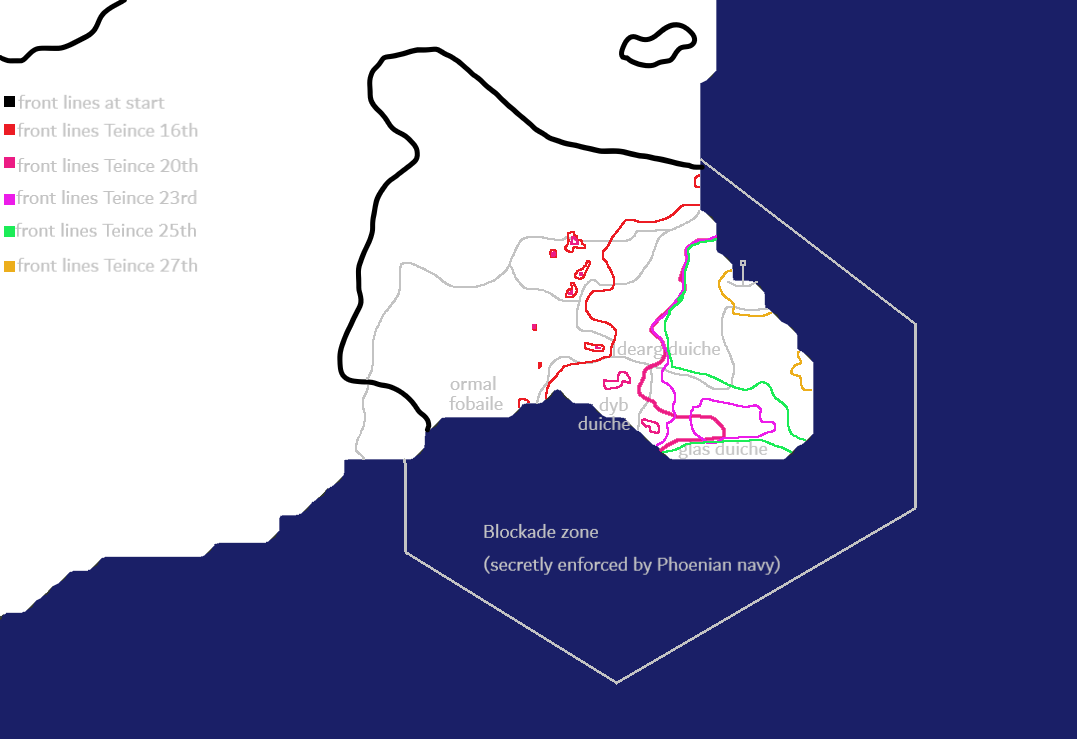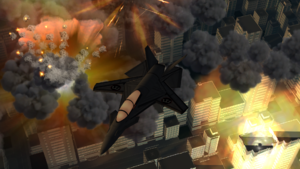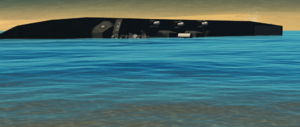Operation Tetraethyllead
Operation Tetraethyllead was an offensive undertaken by the Republicans during the Sahren Civil War in 2146. The goal of the operation was to take the city of Klensagrad from the Klensagrad Commune as it was a major point of industry, recruitment, and morale. The city of Klensagrad was subjected to fierce house to house fighting and artillery during the coarse of the battle.
Background
The Klensagrad Commune split away from the Labour party in late 2145 and the peninsula fell into stalemate. Zokesian battleships bombarded the city afterward. The republicans held out for the beginning of 2146 as per the Strateis Bastiya. The republicans rested their troops in the peninsular front and prepared large stocks of ammunition and supplies. On Teince 14th 2146 the operation was launched.
Opposing forces
Republicans
Prior to the operation's launchdate the Republicans allocated 11 divisions to field group black (feldgrupa Dyb in Egercian) including the volunteer divisions. These totalled to ~82,000 soldiers of which ~24,000 were Republican Guards. Additionally the Republicans had a total of 106 aircraft, 80 tanks, and 290 field guns. Overall command of feldgrupa dyb was given to general Daria Adaman. 5 divisions were directly under Adaman's command and the remaining 6 were under Kirbo Lavro's command.
Klensagrad Commune
The Klensagrad Commune was fortifying the region for many months before the operation began. The Klensagradite people's liberation front officially had 9 divisions but only had ~52,000 soldiers. A majority of these were highly experienced from previous fighting. 71 Aircraft, 40 tanks, and 360 field guns were also present. In overall command of the defence of the Klensagrad peninsula was general Duaren Yague.
Course of operation
Invasion of the peninsula
The operation began on Teince 14th 2146. The first and second trench lines were overwhelmed within the first day of the operation but were stopped by heavy casualties. Republican aircraft bombed roads and railways to slow the Klensagradite retreat. As the Republicans advanced into the suburbs they had to begin clearing homes one by one against Klensagradite partisans. ~6,500 Republicans perished and 40 aircraft were destroyed before even entering the city. By contrast only 3,800 Klensagradites died before falling back to Klensagrad
Initial assault of Klensagrad
The Klensagradite people's liberation front (Klensagradina Narodina svobodad taob in Egercian) were well fortified in the city leading up to the invasion. Everyone between the ages of 15-50 were called upon to fight as partisans. Republicans were unwilling to launch aerial attacks to minimize damage of the city. The battle quickly bogged down as a majority of the buildings closer to the centre were converted into bunkers. The Republicans were experienced in modern trench warfare and struggled against the guerilla campaign they were now against.
| “ | Five years happened in eleven days here. Nobody can ever describe what happened at Klensagrad because nobody can remember all of this. Only the deaf slept, and only the luckiest were not buried by debris at least once. | ” |
| —Anonymous author of "Klensagrad at war" | ||
By Teince 16th the Republican Guard air-corp was completely stripped of restrictions and began a terror bombing campaign. Republicans seized the entirety of the Ormal suburbs and were entering the southern district. By Teince 17th the republicans authorized the use of tear gas in the sewers to stop the Klensagradites moving in them. At least 350 refugees were killed by fires caused by accidental ignition of the gas and another 1200 were suspected to have suffered related injuries.
The western district did not fall until Teince 19th as it was the densest and most fortified. Offensive actions in this area took many casualties and further advanced were halted by Teince 20thth.
Clearing of Goeth an tuascirt university
General Duaren Yague set his headquarters up in Goeth an tuascirt university in the eastern district of the city. Surrounding buildings were converted into pillboxes. Republicans began clearing the surrounding buildings in Teince 19th and by Teince 20th advanced onto the main complex. Casualties and damages were heavy on both sides. By the 22nd the Republicans were in control of half of the complex. Counterattacks on the eastern district cut off the Republicans from the rest of the city by Teince 23rd but after two days of relentless bombardment by aircraft and artillery the Klensagradites retreated from the encirclement. There are many theories about Duaren Yague's death but the most widely accepted one is that he was killed when the ceiling collapsed due to an artillery shell.
Final resistance
The battle continued after the death of General Duaren Yague. The last bastion of resistance was the Klensagradina Stahlduga where refugees were attempting to escape the Republicans via the sea. The vast majority of these were forcefully turned back by Phoenian naval patrols and held in hastily constructed camps.
On Teince 27th The damaged Klensagradite destroyer Midzha was intentionally sank in shallow water to act as an artillery platform. A makeshift bridge was attached to a rock near the ship under heavy shellfire and it was stormed by 14 Republican guardsmen. The Republican guards were misidentified as Klensagradite partisans running supplies and targetted by republican aircraft. Two timed fuze guided bombs landed in the sand underwater near the Midzha and the blast rolled it over, and the resulting capsizing left only 3 of the Republican Guardsmen and a singular Klensagradite surviving, all trapped within an air pocket on the starboard side. These were later rescued by cutting into the hull.
After the city was captured a small amount of partisans continued to use the tunnel networks and the sewers for ambushes. A battalion of Republican guard shock dragoons continued fighting for another 7 days as they cleared the underground complexes. The tactics used are still controversial. Many have accused the Republican Guard of war crimes for their usage of tear gas and incendiary bombs in these enclosed spaces. Of the ~800 partisans in the sewers it is thought that 450 were killed in action, 250 died from suffocation, and 100 surrendered.
Aftermath
The end of Operation Tetraethyllead resulted in the complete destruction of the Klensagrad Commune and the seizure of Klensagrad by the Sahren Republican guard. Although most buildings were damaged, Klensagrad was a massive industrial and morale victory for the Sahren Republican guard and signified the superiority of the Republican coalition.
Casualties and aftermath
Casualties have been hard to calculate as this battle saw some of the most extreme instances of disorganized vengeance killings during the Sahren Civil War. Republican casualties were estimated to 18000 killed. Klensagradite casualties are disputed between 15000 and 30000 killed, and are widely regarded as entirely unknown. The captured Klensagradites were made into forced prison labour to rebuild infrastructure in the city and clear minefields. Reliance on unpaid labour to rebuild broken infrastructure is widely regarded as one of the causes of the Sahren hysteria of 2160.
The Midzha was still present in the shallower parts of the Klensagrad harbour for many years afterward. It slowly sank deeper into the sand and by 2154 would only pierce the surface of the water during low tide. In that same year the Adaman steel company officially purchased permission from the city of Klensagrad to salvage the wreckage. Many components were found to be in good condition and were used for the river cargo ship Trócære Rioga.


